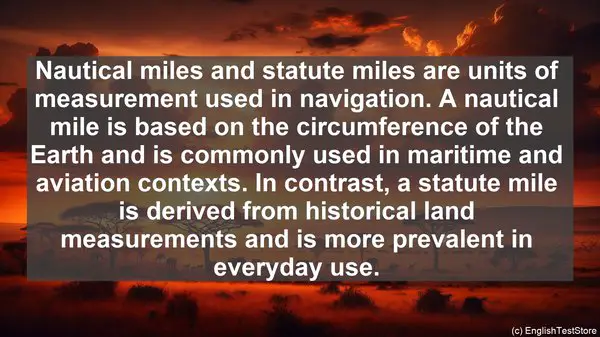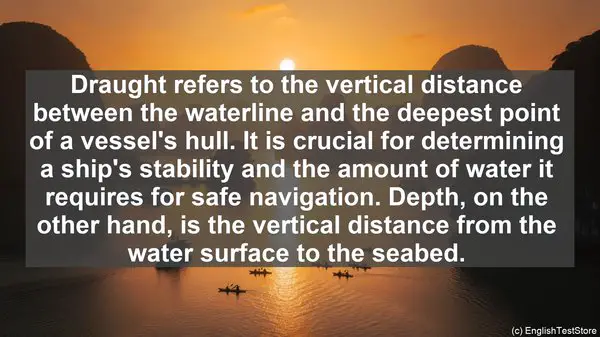1. Buoyancy vs. Floatation
While both terms refer to the ability of an object to float, buoyancy specifically relates to the upward force exerted by a fluid on a submerged or partially submerged object, whereas floatation is the process of keeping an object on or near the surface of a fluid.
2. Tide vs. Current
Tides are the periodic rise and fall of sea levels caused by the gravitational pull of the moon and sun, whereas currents are the continuous, horizontal movements of water. While tides are more predictable and follow a regular pattern, currents can vary in direction and intensity.
3. Wave Height vs. Wave Length
Wave height refers to the vertical distance between the crest and trough of a wave, whereas wave length is the horizontal distance between two consecutive crests or troughs. Both parameters are crucial for understanding wave behavior and designing structures to withstand their forces.

4. Erosion vs. Sedimentation
Erosion is the process of wearing away or displacement of soil, rock, or sediment by wind, water, or other natural agents. On the other hand, sedimentation refers to the deposition or settling of eroded material. Both processes play a significant role in shaping coastal areas.

5. Offshore vs. Onshore
Offshore refers to activities or structures that are located in the open sea, away from the coast. On the contrary, onshore pertains to areas or operations that are situated on or near the land. This distinction is essential when discussing projects or regulations in ocean engineering.
6. Breakwater vs. Seawall
Both breakwaters and seawalls are coastal defense structures, but they serve different purposes. A breakwater is designed to reduce the force of waves, while a seawall aims to prevent coastal erosion. The choice between the two depends on the specific needs of the area.
7. Submersible vs. Semi-Submersible
A submersible is a vessel that can be fully submerged underwater, often used for research or exploration. On the other hand, a semi-submersible is a platform that can partially submerge, typically employed in offshore drilling or as floating structures.
8. Nautical Mile vs. Statute Mile
Nautical miles and statute miles are units of measurement used in navigation. A nautical mile is based on the circumference of the Earth and is commonly used in maritime and aviation contexts. In contrast, a statute mile is derived from historical land measurements and is more prevalent in everyday use.
9. Draught vs. Depth
Draught refers to the vertical distance between the waterline and the deepest point of a vessel’s hull. It is crucial for determining a ship’s stability and the amount of water it requires for safe navigation. Depth, on the other hand, is the vertical distance from the water surface to the seabed.
